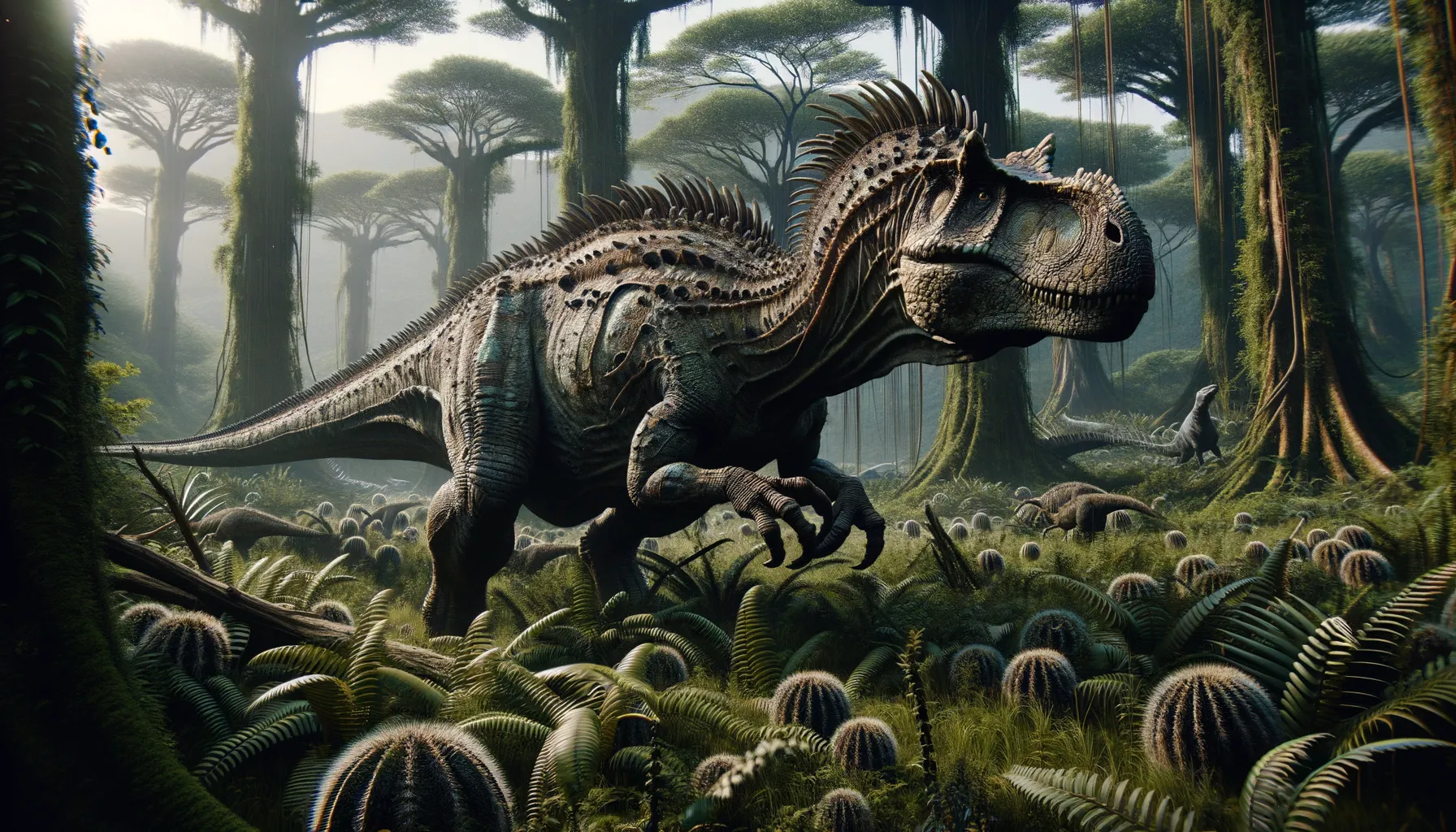
Loricatosaurus
Armored and slow, a Jurassic survivor.
Period
Jurassic
Length
Around 5 meters in length.
Height
Up to 4 meters tall.
Weight
Approximately 2 tons.
Loricatosaurus was a heavily armored dinosaur that lived during the Jurassic period. Its body was protected by bony plates and spikes, making it a challenging target for predators. This herbivorous dinosaur roamed ancient landscapes in search of plant material to consume. Its robust build and protective armor suggest a slow but steady lifestyle, preferring to forage for food in dense vegetation and avoid unnecessary confrontation.
Diet
Loricatosaurus was a herbivore that primarily fed on low-lying vegetation. Its diet would have included ferns, cycads, and other prehistoric plants. Its teeth and beak were adapted to strip foliage efficiently.
Hunting
As a herbivore, Loricatosaurus did not hunt for food. Instead, it foraged among dense plant material, using its keen sense of smell to locate food. It would have been more concerned with evading predators than pursuing prey.
Environmental challenges
Loricatosaurus faced challenges from a range of predators during the Jurassic period, including large theropods. Its slow movement and reliance on armor for protection were critical. The changing climate and periodic disruptions to its plant-based food supply would have also been continuous challenges. Adaptation to varying environmental conditions was essential for survival.
Speed
Slow-moving due to its bulky armor.
Lifespan
Estimated to be around 20 to 30 years.
First discovery
First discovered in England in 1924.
Fun Facts
- Loricatosaurus was a type of stegosaur, known for its distinct plates and spikes along its back.
- It lived during the Late Jurassic period, approximately 150 million years ago.
- Loricatosaurus was herbivorous, meaning it only ate plants, using its beak-like mouth to clip leaves and stems.
- The name 'Loricatosaurus' means 'armored lizard,' highlighting its protective bony armor.
- Fossils of Loricatosaurus have been found in Europe, particularly in the United Kingdom.
- This dinosaur probably moved slowly due to its heavy body and short legs.
- Loricatosaurus may have used its tail spikes for defense against predators.
Growth and Development
Loricatosaurus, like many dinosaurs, likely hatched from eggs. Young Loricatosaurus would have been vulnerable and dependent on their protective armor as they grew. Over time, their bony plates would become more developed, providing increased defense against predators. Nutritional needs during growth would have necessitated a diet rich in fibrous plants.
Habitat
Loricatosaurus inhabited environments rich in vegetation, such as forests and floodplains. These areas provided ample food and cover from predators. The surroundings would have been lush with plant life during the Jurassic period, creating an optimal environment for this herbivorous dinosaur to thrive. Proximity to water sources would have been an important aspect of its chosen habitat.
Interaction with other species
Loricatosaurus coexisted with a variety of other dinosaur species in its habitat. Its interactions were likely limited due to its reclusive nature and protective instincts. Interspecies competition for plant resources could have occurred, leading to adaptive behaviors to minimize conflict. Predatory species would have viewed it as a potential, albeit challenging, prey due to its defensive capabilities.
Natural lifespan
Typically reached natural lifespan of about 25 years.
Reproduction
Reproduction likely involved laying eggs in nests constructed on the ground. The protective structure of the habitat offered a secure environment for raising young. Parental care may have involved guarding the nest and hatchlings. Such behavior would have increased offspring survival rates amid prehistoric threats.
Social behaviour
Loricatosaurus may have exhibited some level of sociality, possibly moving in small groups for better protection and resource location efficiency. Its interactions were primarily dictated by environmental needs rather than complex social bonding. The social organization would have centered around foraging and predator avoidance. These behavioral tendencies would have been crucial for survival.
Fossil locations
Fossils of Loricatosaurus have been found in England, primarily within Jurassic strata. These discoveries have provided important insights into its anatomical structure and lifestyle. The local geology offers a rich source of material that continues to inform paleontological understanding. Further exploration may yet uncover additional significant remains in these regions.
